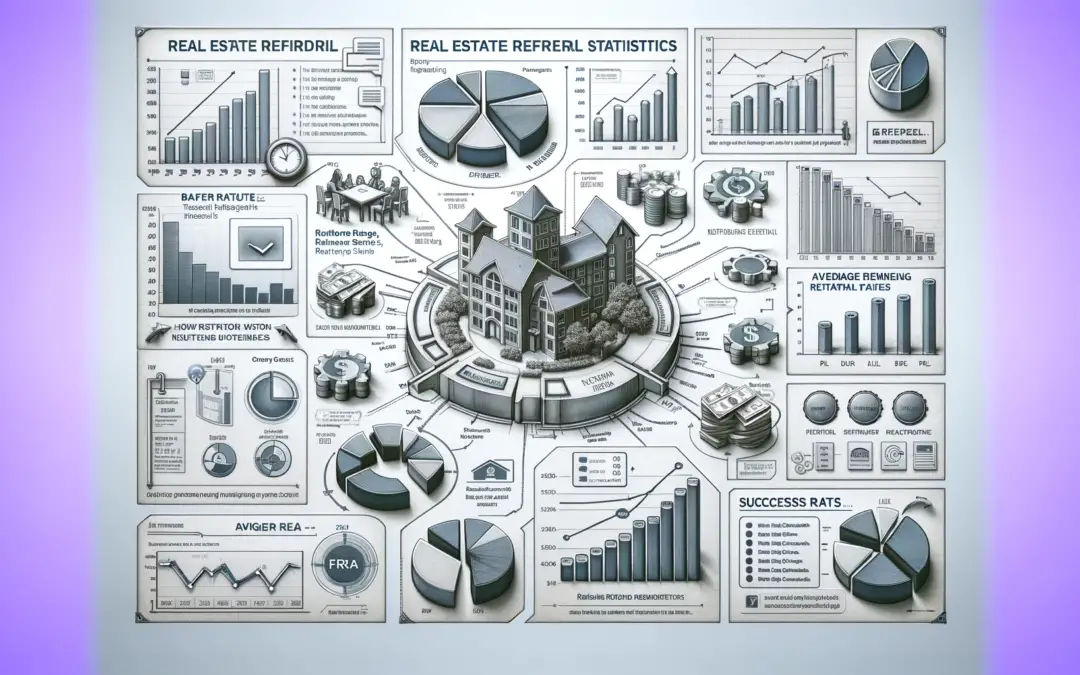I conducted research to find performance-based statistics about real estate referral marketing.
Yet, the ones I found are from industries other than real estate.
Still, you can apply the information almost 1:1 to the real estate industry.
Why?
The psychological factors that make people refer don’t change with the industry. They are time-less (evergreen).
So it’s a safe bet to assume that most of these statistics also apply to real estate.
It’s important to know at least some of them so you can better decide whether to start using this lead generation method.
Referral Statistics Applicable to Real Estate
-
41% of sellers found their real estate agent through a referral (source).
-
Consumers consider word-of-mouth to be two to ten times more reliable than paid ads (source).
-
If customers had a positive experience with a company, 69% would recommend it to others (source).
-
Using a referral program with an incentive or reward can motivate more than 50% of people to refer new customers (source).
-
You can increase the profit margin by 25% (due to lower costs per lead) from referred customers (source).
-
The conversion rate is 30% higher from referred customers than from different lead sources (source).
-
78% of B2B marketers rate the lead quality from referral programs as excellent (source).
-
More than half (54%) mention that lead costs are lower than in other channels. This is when using referral programs (source).
-
Getting extra referrals from referred customers is four times higher (source).
-
70% still use email to refer products and services to their friends. But SMS converts better since this is the most used channel. Prospects are thirty percent more likely to shop this way than when referred by email. (source).
-
Over a quarter of referrals happen ten or more days later (source).
-
63% of referring women do it to treat their friends to a great offer, and 57% of men do it to get a reward (source).
-
Suppose you send an email inviting past clients to refer right after a transaction. In that case, the chances of a referral increase by 23% (source).
The above statistics sound intriguing at first glance, but you may want to take them with a grain of salt.
Why?
Let’s take the statistic that you get a 30% higher conversion rate from referred customers than leads generated in different ways.
There is not much more information about the lead generation methods or campaigns it was compared to.
Maybe they were campaigns that weren’t optimized enough, had bad copywriting, etc.
So, we can’t know for sure what variables were considered for the statistical results.
Still, we can’t ignore that referral marketing (in real estate), by logic, can reduce your lead costs. And it can also increase the quality of leads and profits.
It’s actually simple to calculate.
Let’s assume your cost to generate a new buyer or seller lead is $25.
If this generated lead refers you to just one additional contact, you just halved your cost per lead to $12.50.
How so?
You didn’t pay for the generation of this extra lead (ignoring reward costs).
This article has been reviewed by our editorial team. It has been approved for publication in accordance with our editorial policy.
- Performance Risks of “Marketing ROI Black Boxes” for Real Estate and other Industries - October 15, 2024
- What You Don’t Measure in Real Estate Marketing… - October 1, 2024
- What a Worn-Out Flight Attendant Has to Do with Your Real Estate Lead Gen ROI - September 17, 2024

